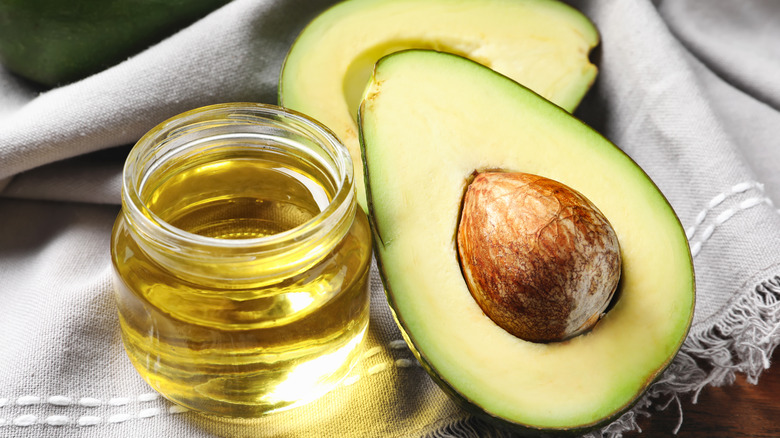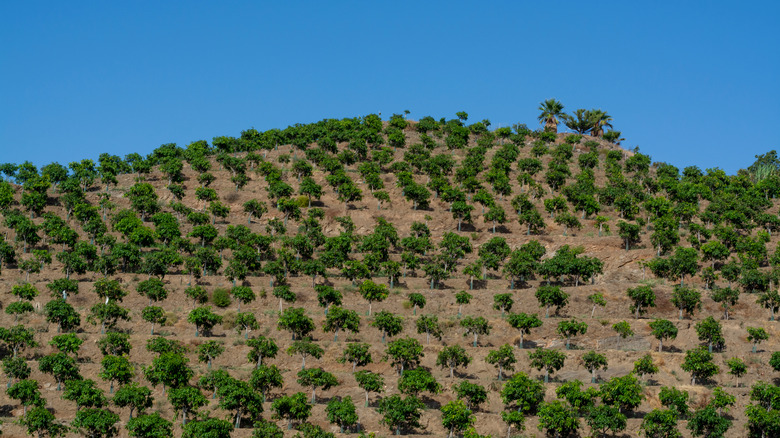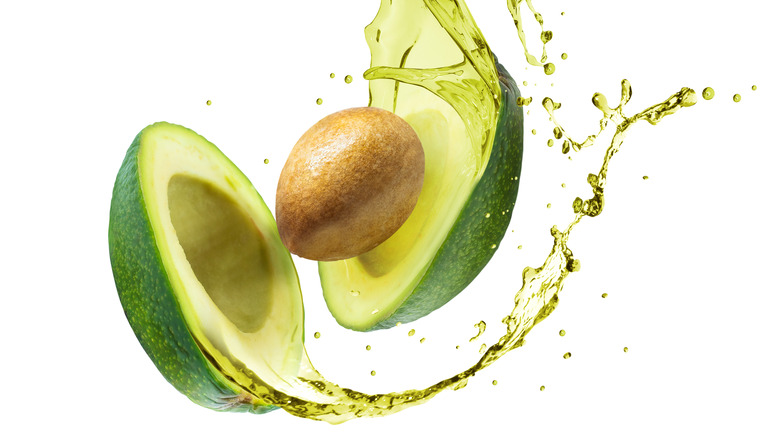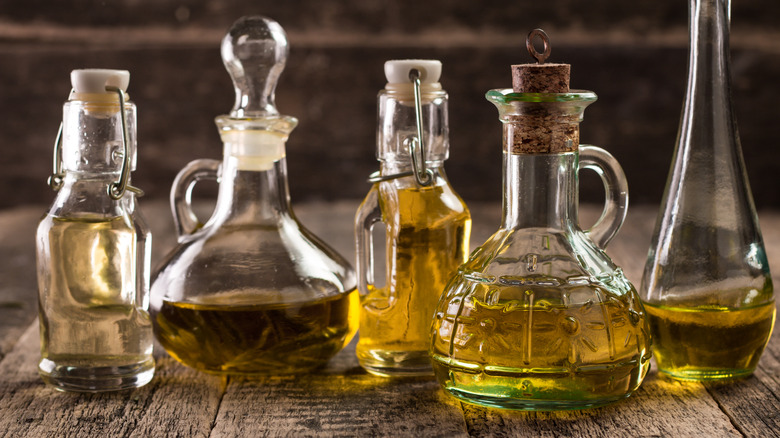This Country Produces The Most Avocado Oil Worldwide
The popular toast topper and Taco Tuesday accompaniment, avocado has long been one of the cool kids, but the oil of this fruit is relatively new to the culinary scene. Once confined to health food stores, avocado oil is becoming a mainstay on every grocery store shelf, thanks to popular diets like paleo and keto.
Its mild flavor, higher smoke point, fatty acid makeup, and myriad of uses, per WebMD, lend to a well-deserved rise in popularity. Whether being used to sauté, dress a salad, or even moisturize your hair and face, avocado oil has a place in the pantry.
Given that the avocado oil industry is expected to reach close to $650 million by the mid-2020s (via Statista), it's worth exploring this newcomer that is giving olive oil a run for its money and may eventually steal the crown of the healthy fats.
Made in Mexico
Mexico prevails as the world's biggest producer of avocado oil, according to BusinessWire. Nipping at its heels are its Central and South American neighbors of Colombia, the Dominican Republic, Peru, Brazil, and Chile.
As expected, avocado oil is primarily made where avocados are grown. Much like Goldilocks, the alligator pear shuns extremes of too hot or too cold and thrives in temperate, warmer climates with medium-to-high humidity levels. While moderate heat may not come to mind when you think of Latin America, Homestead and Chill points out that avocado trees make their homes at higher elevations and have built-in natural mechanisms to mitigate extreme heat. They need well-draining soil and do not do well with soggy conditions.
While most of the production is confined to these subtropical climates, many countries produce avocado oil regionally, such as New Zealand, Israel, Spain, and the United States — not surprisingly, mostly in the moderate climate of the sunshine state, California (via History Cooperative).
A different extraction
Unlike other oils, avocado oil is made from the fruit's flesh, not its seed. When the oil content of the avocado reaches around 8%, the avocado is ready to be picked and moved to produce aisles for that lucky shopper to give a squeeze and find that elusive window of ripeness. The fruit that is too small (or not pretty enough for store shelves!) at that 8% level is left on the tree until September or October. The oil concentration is highest, upwards of 20%, in the last two months of the avocado growing season. The more mature the fruit, the more oil it contains.
The possibility of extracting oil from avocados for consumption was already being considered in the early 1900s in England. By the 1930s, the United States began using the picked and blemished crops to extract oil. Come the 1950s, and avocado oil was being commercially produced (via Avocado Source).
Uses and labels
Mexico may produce most of the liquid greenish gold, but the United States happily bears the brunt of its consumption. The emergence of avocado oil's health and cooking benefits in recent years has earned it a well-deserved spot in the cabinets. Per Healthline, it's rich in healthy fats and touted as heart-healthy — almost 70% of it is oleic acid. It's a great source of antioxidants, helps with nutrient absorption, and can be applied topically for skin health.
As with all oils, there are quite a few labels to decipher. Unrefined versus refined indicates whether or not the avocado oil was treated with bleach and deodorization. Unrefined avocado oil has a stronger flavor than refined. Extra-virgin avocado oil was extracted after the first press, and virgin variety by just pressing with no chemicals or heat. Cold-pressed, sometimes referred to as raw, is just that — no heat used. Refinement does detract from some of the oil's health benefits, but it allows for rotten and damaged avocados to not go to waste (per Ava Jane's kitchen).



